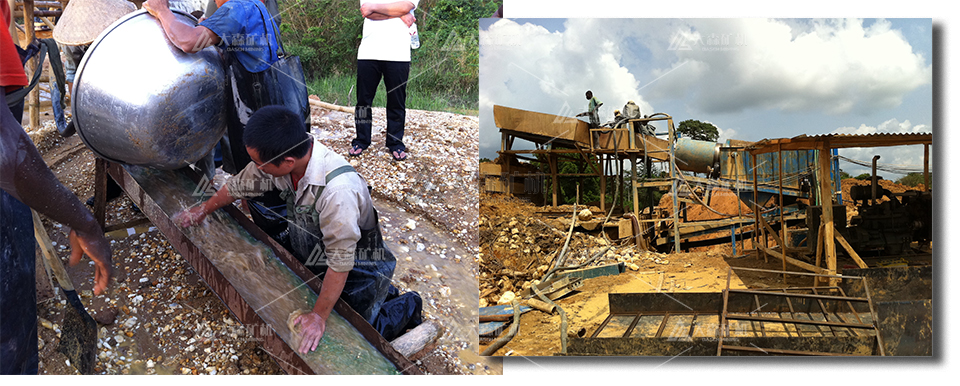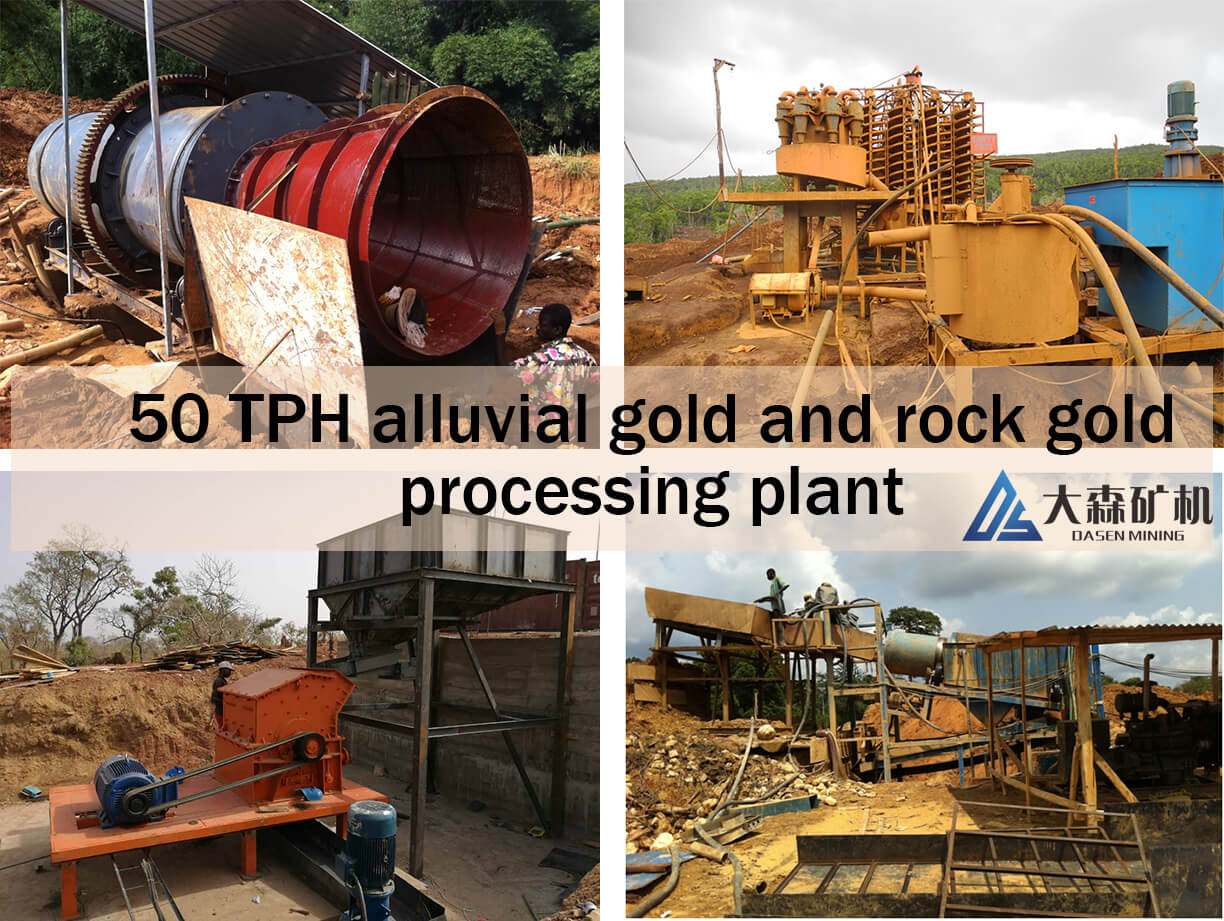How to Choose the Right Alluvial Mining Methods for Your Gold Plant?
Alluvial gold mining is a crucial process in the extraction of gold from alluvial deposits. In this setup, the alluvial gold industrial processing equipment for the plant is comprehensively presented. It is configured with a variety of essential machinery including a trommel screen, gold concentrator, sluice box, belt conveyor, trough feeder, jaw crusher, hammer crusher, shaking table, and gold smelting furnace.
When it comes to alluvial gold mining methods and alluvial mining methods in general, the process begins with the alluvial raw ore. The alluvial raw ore is fed into the trommel screen. This step is vital as it washes away a few little clays and separates the gravel or stone. Some of these materials need to be crushed and ground to extract the inside gold. The separated gravel can be efficiently transferred to the next jaw crusher by the belt conveyor.
The rock stone part has a crushing capacity of around 5tph, and the later-stage grinding and gold separation of the rock stone part is around 3 tons per hour. For this alluvial gold mining flowsheet, the Trommel screen is designed with mobile wheels, which offers great convenience as it can easily move from one site to another. Alternatively, you can choose a stationary one. The trommel screen is designed with one – layer screen. Materials bigger than +6mm go to the jaw crusher (max input stone shall be less than 210mm), which can crush the big stone into smaller particles around 40 – 60mm.
The output from the jaw crusher is then conveyed to the hammer crusher via the belt conveyor. The hammer crusher further crushes the smaller stone to less than 10mm, which is then sent to the wet pan mill for grinding. The wet pan mill grinds the 10mm gravel stone to less than 1mm, effectively releasing the inside gold. After that, the material is sent to the shaking tables for gold separation.
Slurry pumps receive a smaller size 6mm from the drum screen. Two slurry pumps are used to pump the slurry into the gold concentrator for the initial gold-catching process. The concentrates from the gold concentrator are then sent to the shaking table for further gold separation to enhance the recovery rate. In alluvial gold mining, proper equipment configuration like this is key.
On this part, each gold concentrator is equipped with one sluice box for the tailings, and two shaking tables are matched with each gold concentrator accordingly. All the collected gold concentrates after the shaking table process will be sent to the gold smelting furnace for melting into gold bars. This entire setup and the use of these alluvial gold mining methods ensure an efficient and effective alluvial gold mining operation.
If you have ideas or questions about gold process plant and industrial processing equipment, please contact us: Whatsapp:+86 133 1927 7356
Email:[email protected]


